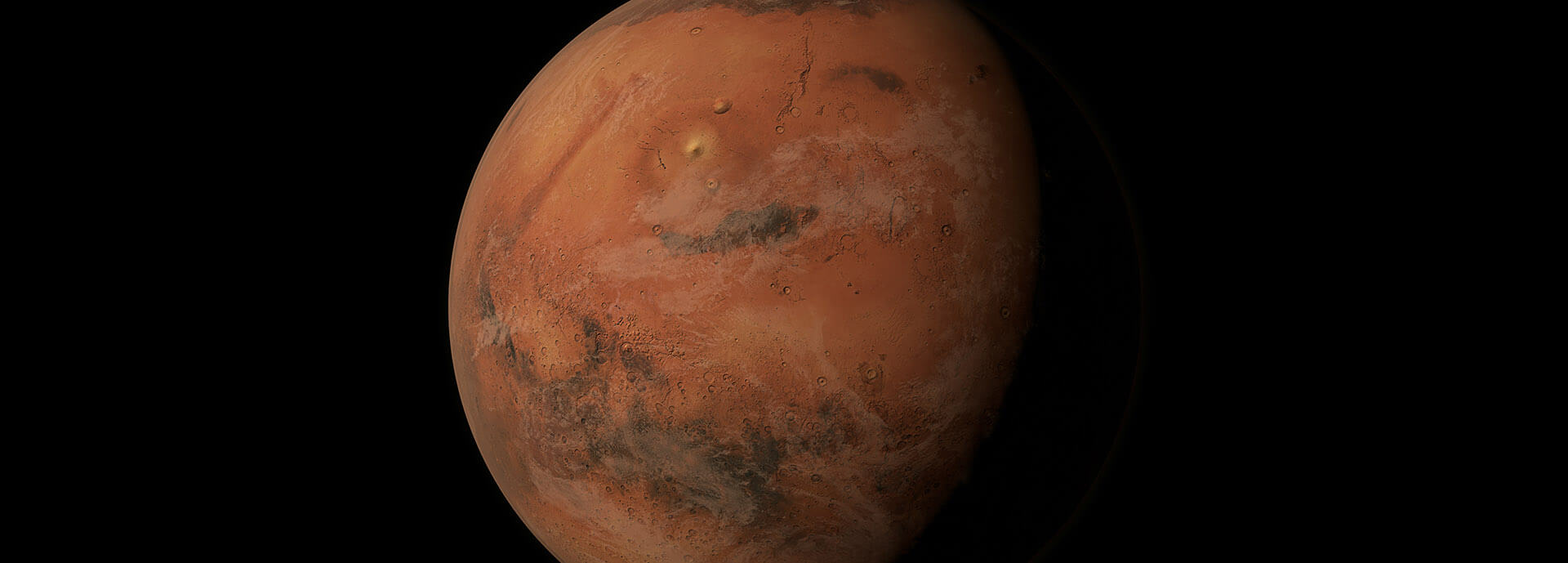A NASA mission to Mars – involving University of Stirling scientists – has ended 15 years after arriving on the Red Planet.
The team lost contact with the Mars Exploration Rover Opportunity around eight months ago and, despite a number of salvage attempts, NASA announced the end of the mission earlier this week.
Dr Christian Schröder, of the Faculty of Natural Sciences, has been involved throughout the entire mission – from the planning phase until now. He led the investigation of the first meteorites discovered on Mars. His colleague Dr Alastair Tait supported the search for further meteorites.

Dr Christian Schröder
Dr Schröder said: “We are proud to have been involved in this historic and extraordinary mission. While, of course, it is disappointing that many years of work have come to an end, we celebrate and appreciate the success of this mission, which has transformed our understanding of Mars.
“Opportunity leaves an extraordinary and unprecedented legacy.”
Dr Schröder, while at the University of Mainz in the early 2000s, helped to develop the miniaturised Mössbauer spectrometer, MIMOS II, for the Spirit and Opportunity rovers. The instrument delivered crucial data for many of Opportunity’s most important discoveries. He joined the University of Stirling in 2013, where he has led the work on meteorites.
After receiving a Commonwealth Rutherford Fellowship, Dr Tait joined Stirling – and the Opportunity team last year – with the aim of finding more meteorites on Mars.
Discovered
Opportunity arrived on Mars in January 2004 with the goal of finding evidence for the past presence of water at its landing site, and to assess past environmental conditions and their suitability for life.
Shortly after landing, Opportunity discovered sedimentary sandstones that contained unequivocal mineralogical and morphological evidence for water pooling on the Martian surface a few billion years ago – discoveries that Science journal crowned Scientific Breakthrough of the Year in 2004.
In total, the rover covered more than 28 miles over the 15-year-period – despite being designed to travel only 1,006 metres over 90 Martian days.
In June 2018, while exploring Perseverance Valley, which is cutting through the rim of the Endeavour crater, Opportunity was hit by the largest dust storm ever observed on Mars and communication was lost.
Significantly, Opportunity’s investigation of the crater rim had revealed several episodes of water activity, some predating the water from which the sandstones in the surrounding plains formed – and some with less acidic water that would have been more suitable for life.
The University of Stirling remains involved in Mars exploration, with Dr Axel Hagermann and Dr Nicholas Attree working on NASA’s InSight mission – the latest to land on the Red Planet. The scientists will study data gathered from the lander’s heat flow probe – which was deployed earlier this week – in a bid to better understand the evolution of the solar system.
Dr Schröder’s involvement in the Opportunity mission, and Dr Hagermann and Dr Attree’s work on InSight, are funded by the UK Space Agency.

